Bleaching hair is often a must-do step in the process of changing your hair color. If you want to go for dramatic changes and shift from brown or red to blonde, for example, bleaching is something that you will not skip.
However, after the procedure is successfully completed, there comes a common question: how to get rid of hair bleach if there are any leftovers?
Some people decide to pour it down the drain simply, but is it the correct way? To find out the truth, we have prepared the following article for you. Read it to learn how to safely dispose of bleach and how to dispose of leftover hair dye in addition. Moreover, we will explain to you why it is essential to follow the disposal rules and recommendations.
What to Do With Leftover Hair Bleach?
If you tend to change the color of your hair frequently enough, you have definitely been through the bleaching procedure several times at least. And you definitely know that bleaching is often a mandatory step of the hair dyeing procedure.
But how to dispose of leftover hair bleach safely afterward, you may be wondering?
Well, if you dye your mane in a salon, then there is nothing to worry about. Your colorist will take care of the leftover product according to the rules of disposal. However, things become slightly different if you bleach hair at home without any help.
In this case, how is it possible to get rid of bleach so that it is done safely?
You probably know that some people simply pour bleach and/or bleach water down the drain. However, we would not recommend you do the same, and later on, you will know why! Instead, we suggest you check out the section below where you can find some methods that can help you with disposing of bleach.
Hazardous Waste
If you need to dispose of leftover hair bleach and you want to do it correctly without causing any damage to the environment, the very first thing you need to do is to check your local rules and regulations regarding this procedure.
They should have all the information on the proper disposal of bleaches and other similar chemicals.
Why should you go for hazardous waste disposal, you may wonder?
See, you should note that hair bleach is a hazardous chemical (even despite the fact that it is made for being applied to our hair)! But since it is considered hazardous, you should be ready that some waste facilities might not accept it.
However, if you spend some time and make proper research, you should be able to find some information on waste facilities that accept hazardous chemicals. At this point, please take into consideration that you can only opt for this kind of disposal method if you have hair bleach that is in an empty or used container!
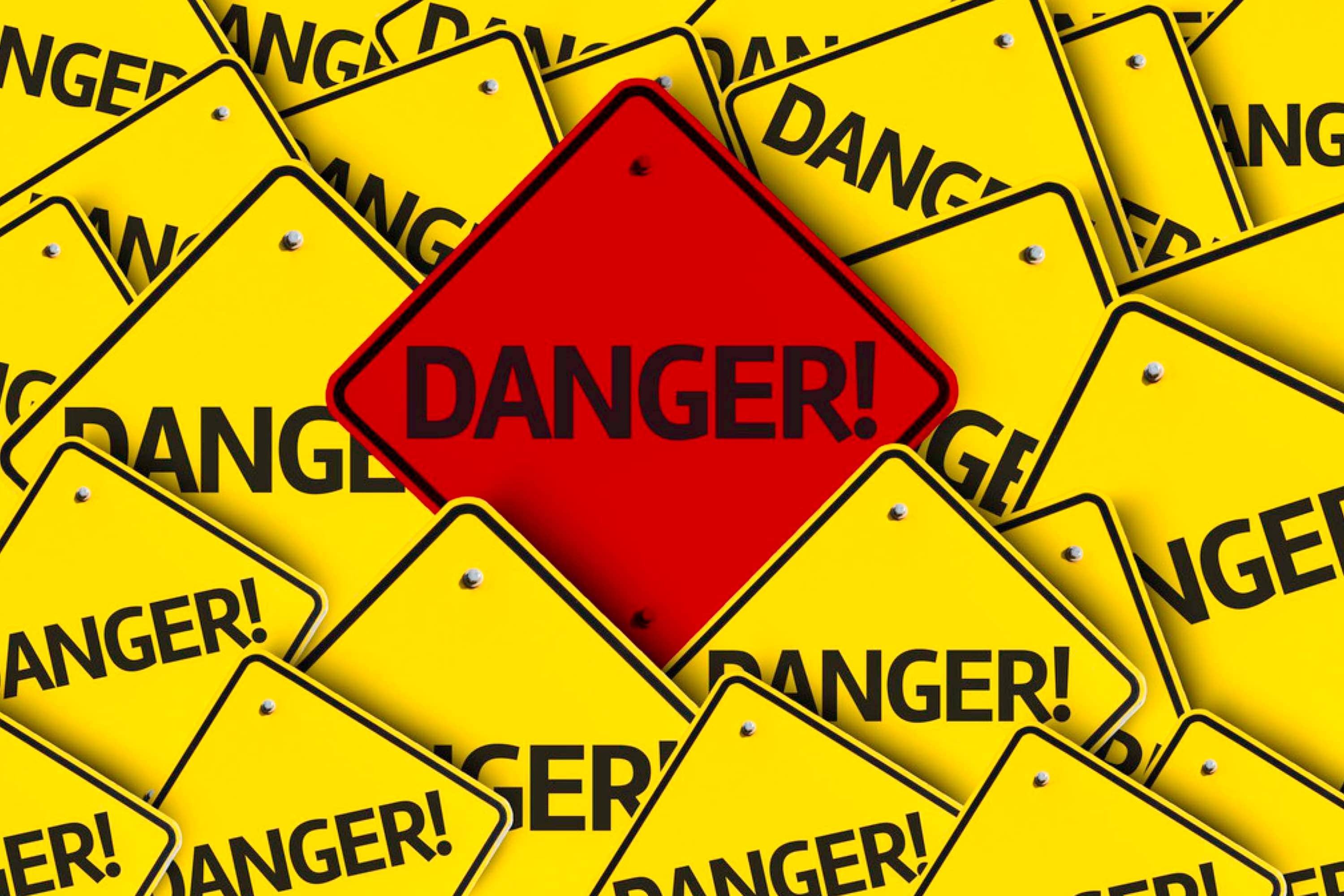
Consider Diluting Leftover Hair Bleach
Diluting is another option possible. It can become handy for those who can’t find waste facilities that accept hazardous chemicals nearby. In this case, you can also dilute the bleach with water in order to pour it down the drain of your sink or bathroom.
Like this, you will reduce the level of danger that this product might have to the pipes.
The procedure of diluting your leftover hair bleach is very simple. Don’t worry, it doesn’t imply any measurements or precise dosage of water and bleach for mixing! Everything is much easier. All you have to do is to undergo several simple steps:
- turn the faucet on first
- then slowly pour the leftover bleach into the drain as the water runs
- keep on pouring it until the container is empty
- check that the container has no bleach in it
- once all the bleach is down the drain, leave the water running for at least a minute
- now you can turn the faucet off
As an alternative option, you can also choose to flush the bleach down the toilet.
However, this solution should only be done for small amounts of bleach! And if you decide to make use of this method, remember that you need to flush twice or thrice! Like this, you will make sure the bleach is completely diluted.
Like this, you are now aware of the most common and approved methods of leftover hair bleach disposal. Of course, this information will only be helpful for you if you dyed your hair at home since, in a salon, your colorist will dispose of the leftover product instead of you.
And even if you know the alternative methods of hair bleach disposal (like flushing it down the toilet), we would still ask you to try and find your local waste facilities that accept hazardous chemicals.
With their help, bleach will be surely disposed of according to all the rules and regulations, causing no harm to the nature and environment.
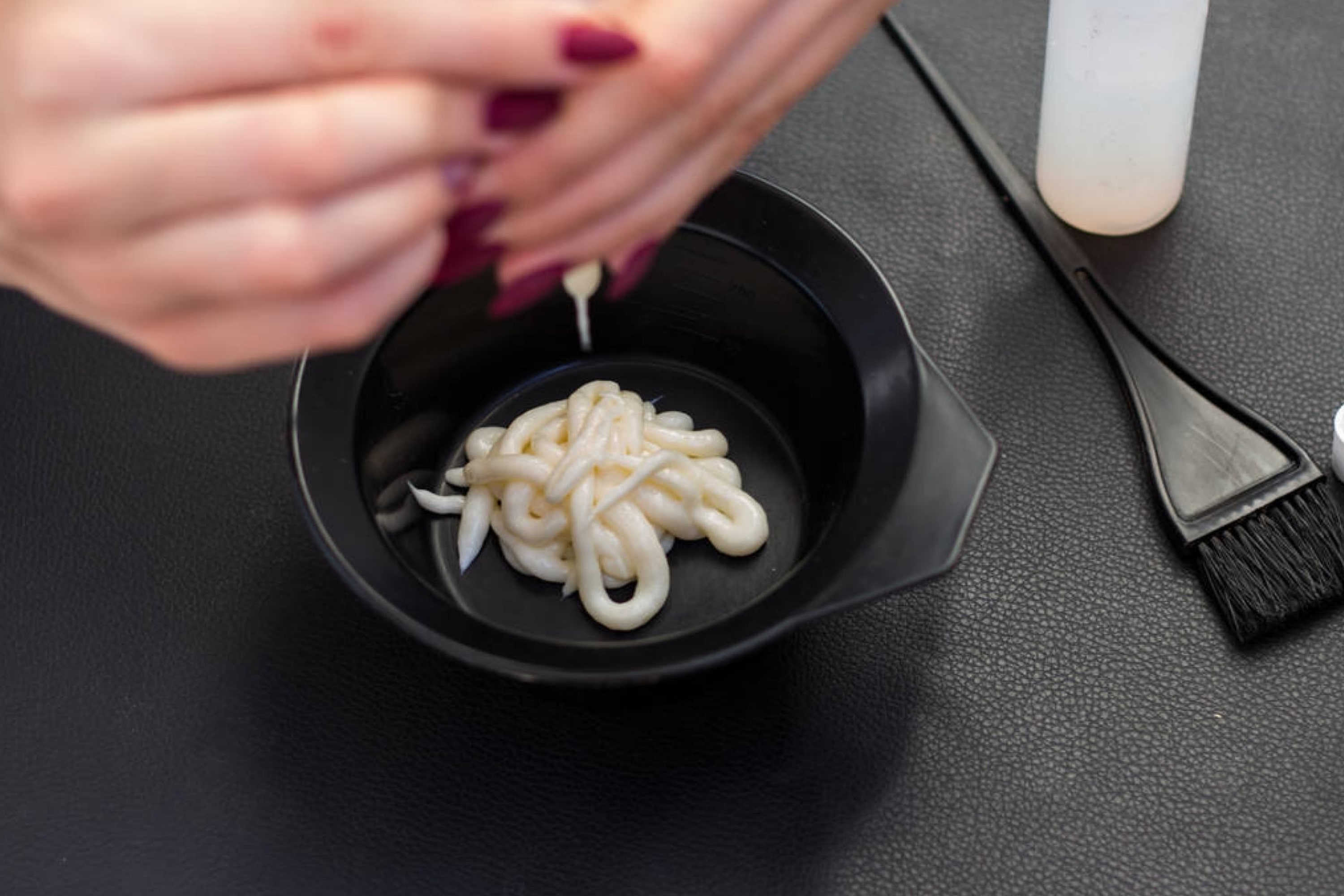
Why Proper Disposal Of Hair Bleach Is Important?
Since it is so important to dispose of leftover hair bleach correctly, many of you might be curious about why exactly this product is considered a hazardous chemical. To answer this question, you should learn more about what hair bleaches are made of.
Hair bleach is a chemical compound, which is obvious. And if you dye your hair often enough using it, you definitely know that hair bleach is used to lighten the color of hair. As for the components it consists of, hair bleach consists of the following components:
- hydrogen peroxide
- ammonia
- and water
This is why, when it is exposed to the air, it releases hydrogen peroxide and oxygen. However, this also makes it a dangerous compound to dispose of improperly! Why is that? Let’s take a closer look at the chemical ingredients of hair bleach to answer this question.
Let’s start with hydrogen peroxide. Hydrogen peroxide is a chemical compound that is made of hydrogen and oxygen. When it is exposed to the air, it releases hydrogen peroxide and oxygen.
Then we have ammonia, which is a colorless gas. Ammonia is used in a wide variety of chemical products, not only as a component of hair bleaches. You can also find it in fertilizers, explosives, dyes, etc.
However, ammonia can be poisonous if it is inhaled or ingested! When ammonia is exposed to the air, it releases nitrogen and water vapor.
The major chemicals in hair bleach that are considered toxic waste are hydrogen peroxide and ammonia, as you can understand now. If dumped in the trash can or poured down the drain or the toilet in their pure state, these compounds can cause serious harm to the environment and to the person who is disposing of them like this.
In addition, these compounds can also easily explode if they are not disposed of properly. Another harm they can cause is the contamination of the groundwater supply. It is therefore important to dispose of hair bleach in a safe and environmentally friendly way.
Now you can see that, while hair bleach is not technically toxic, it can still be classified as a product that contains hazardous chemicals. This is why it means that hair bleach needs to be disposed of in a specific way. Like this, one can make sure that it doesn’t harm other people or the environment.
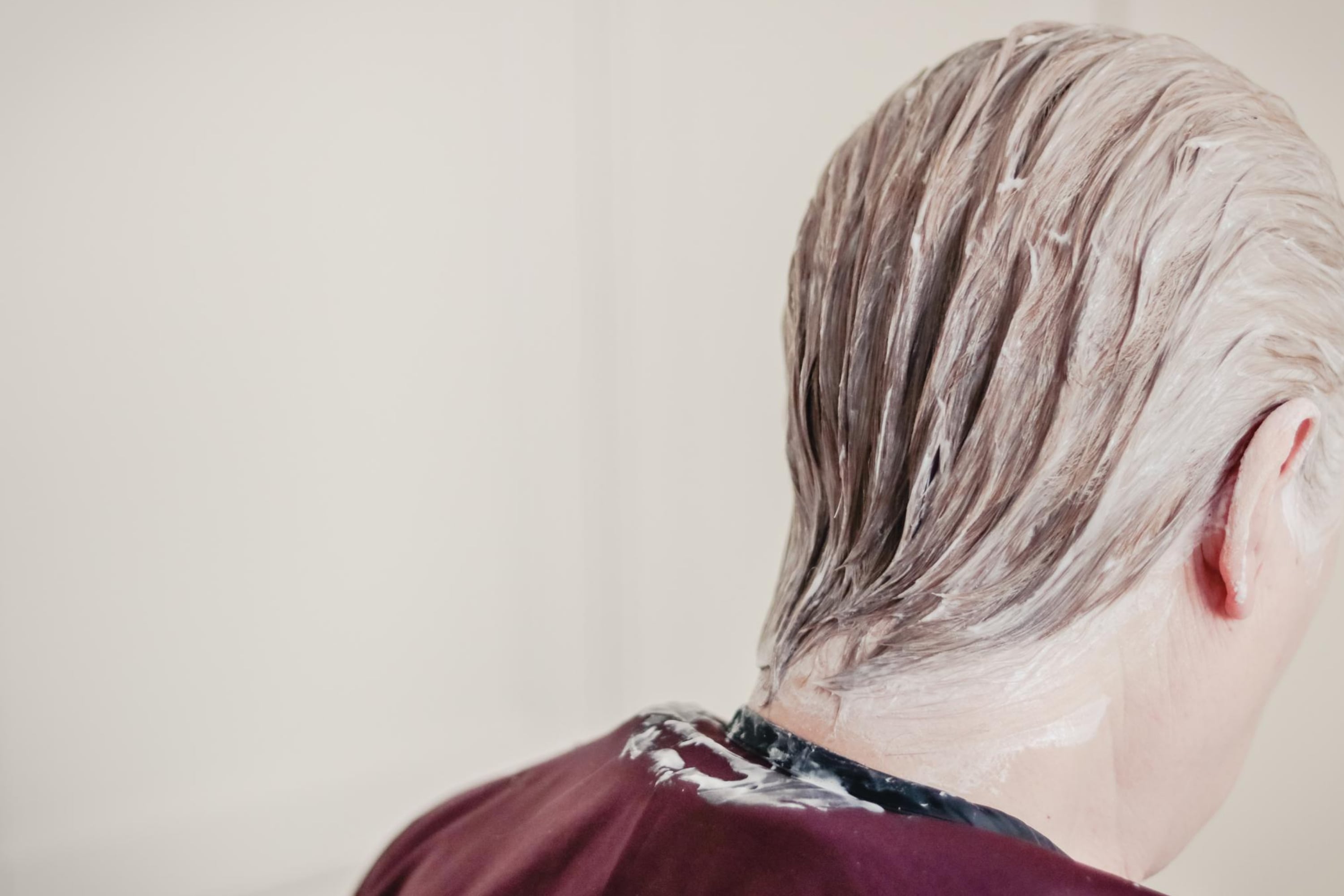
How Long Is Hair Bleach Good For?
In order to dispose of your leftover hair bleach correctly, it is important to know not only how this should be done. In addition, you should be aware of the shelf life of this chemical product. Like this, you will know for sure when it can be considered the most harmful, as well as when it is still safe to use the leftover product should you have any after your previous dyeing session.
In general, hair bleaches last for nearly two years. However, it is still important to check the expiration date on the container of the box before you use it! Using expired hair bleach can be dangerous to your hair and overall health if you inhale its vapors.
Besides, if the product expires, it may not work properly (but this is minor damage in comparison to what can happen to your hair condition).
You should also keep in mind that hair bleaches degrade quickly when exposed to light.
In this case, the product begins to lose its effectiveness within approximately 20 minutes!
Also, if it contains bleach powder, developer, or other chemicals, the shelf life of the product may vary since it can be very difficult to give an accurate shelf life due to claims from different manufacturers on how long their product will last.
So always check your hair bleach before using it and, if you see that it is expired, better dispose of it according to the instruction we gave above than use it. It is easier to buy a new one than deal with damaged hair later, which will surely take more time and money!
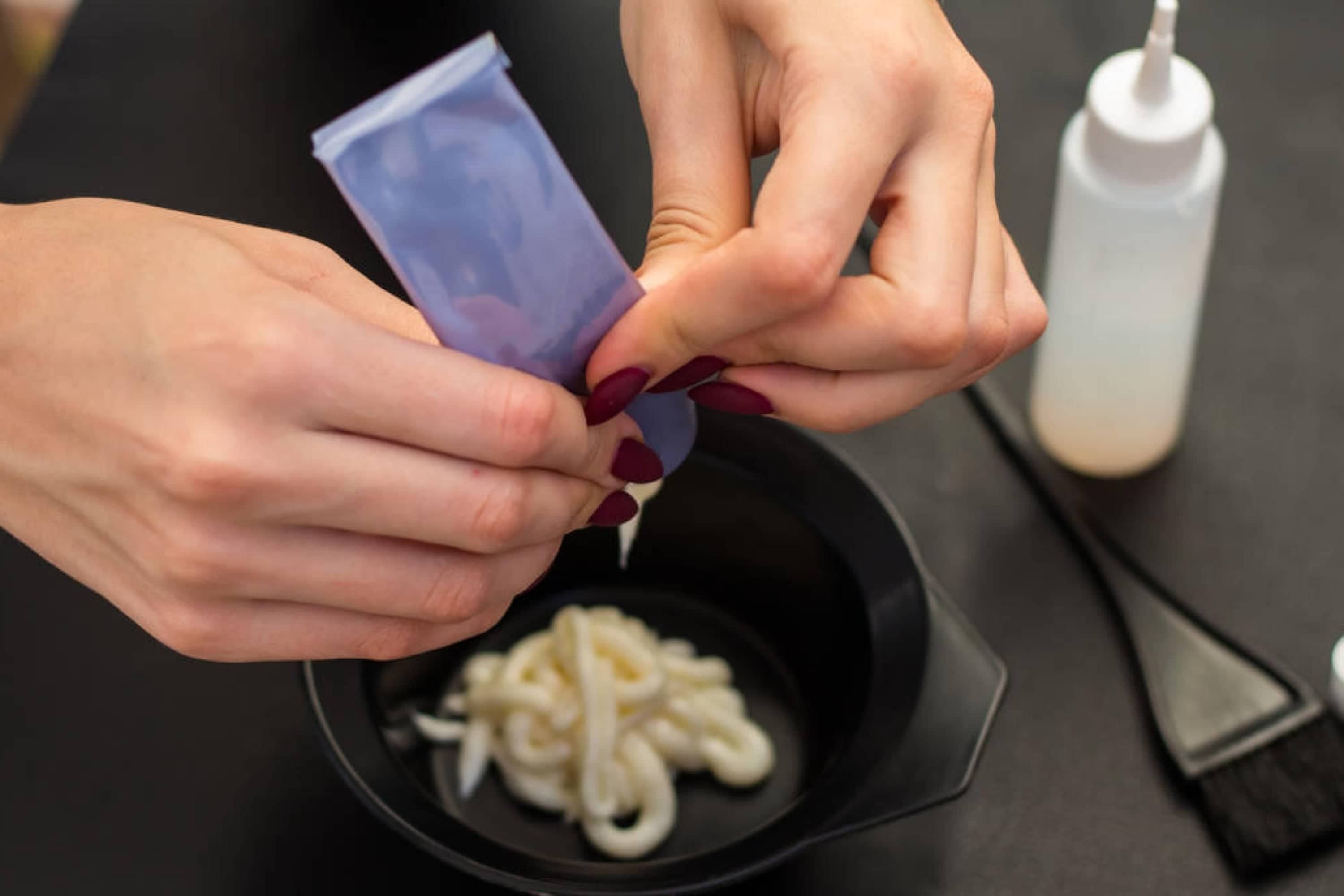
How to Dispose Of Extra Hair Dye?
Since bleach often comes in a pair with a hair dye, it often happens that you have both these products left after you are done coloring your mane.
In this case, it would be also useful to know how to dispose of hair dye correctly. There are several alternative methods that can be used for getting rid of waste hair dye:
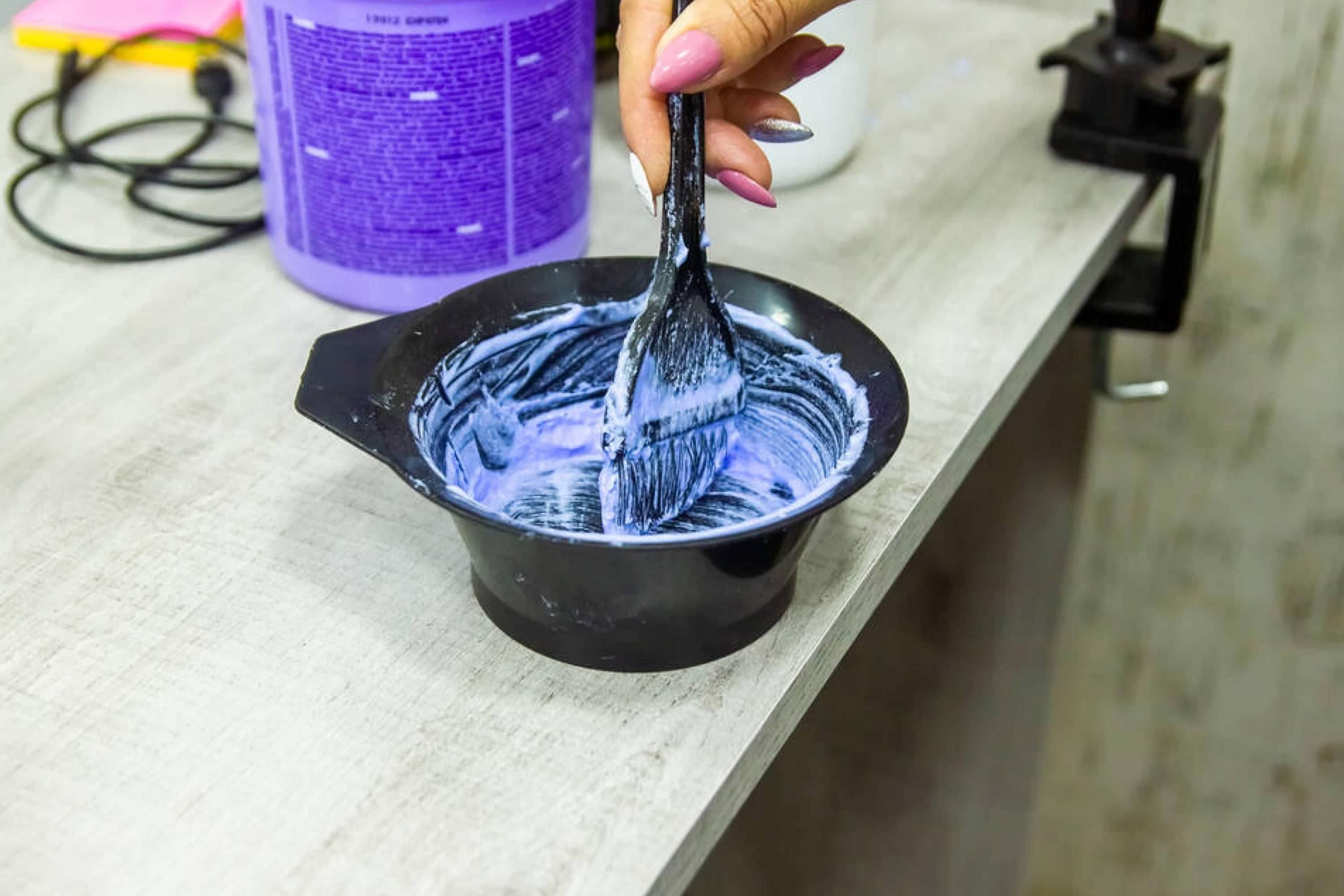
Hazardous Material
Like with hair bleach, hair dye should never be thrown in the garbage or compost bin! It also contains certain dangerous chemicals that could be toxic to the environment, animals, and human beings.
This is why you need to make sure you get rid of it in a safe way. You can check the local area rules on how to get rid of hazardous chemicals and simply follow the recommendations given.
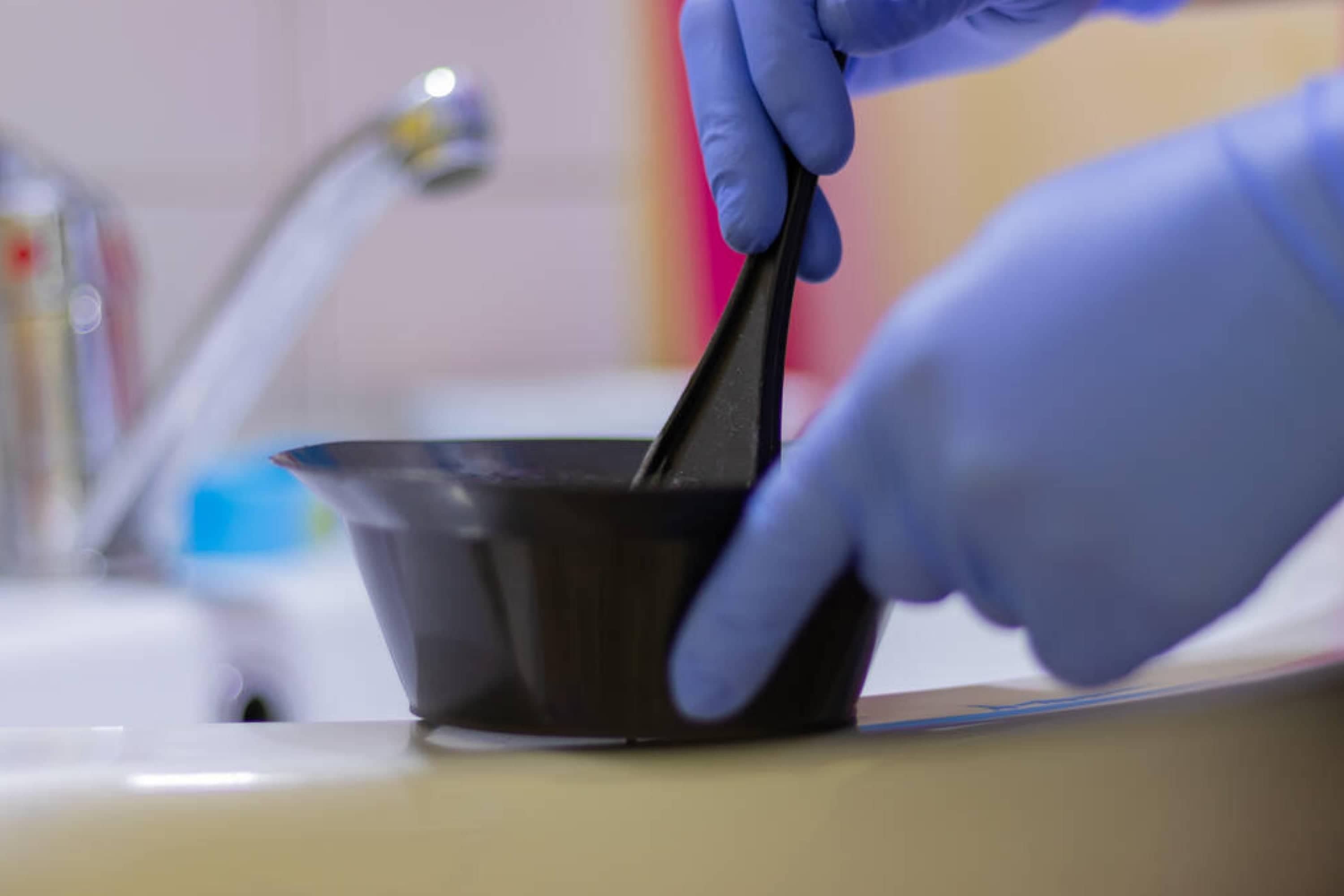
Donate It Or Share It!
This is another great way of disposing of extra hair dye. If you cannot safely dispose of the dye with the help of the local facilities, the best thing you can do is to share or donate it. Like this, you can be sure that the chemicals will not cause any harm to the environment.
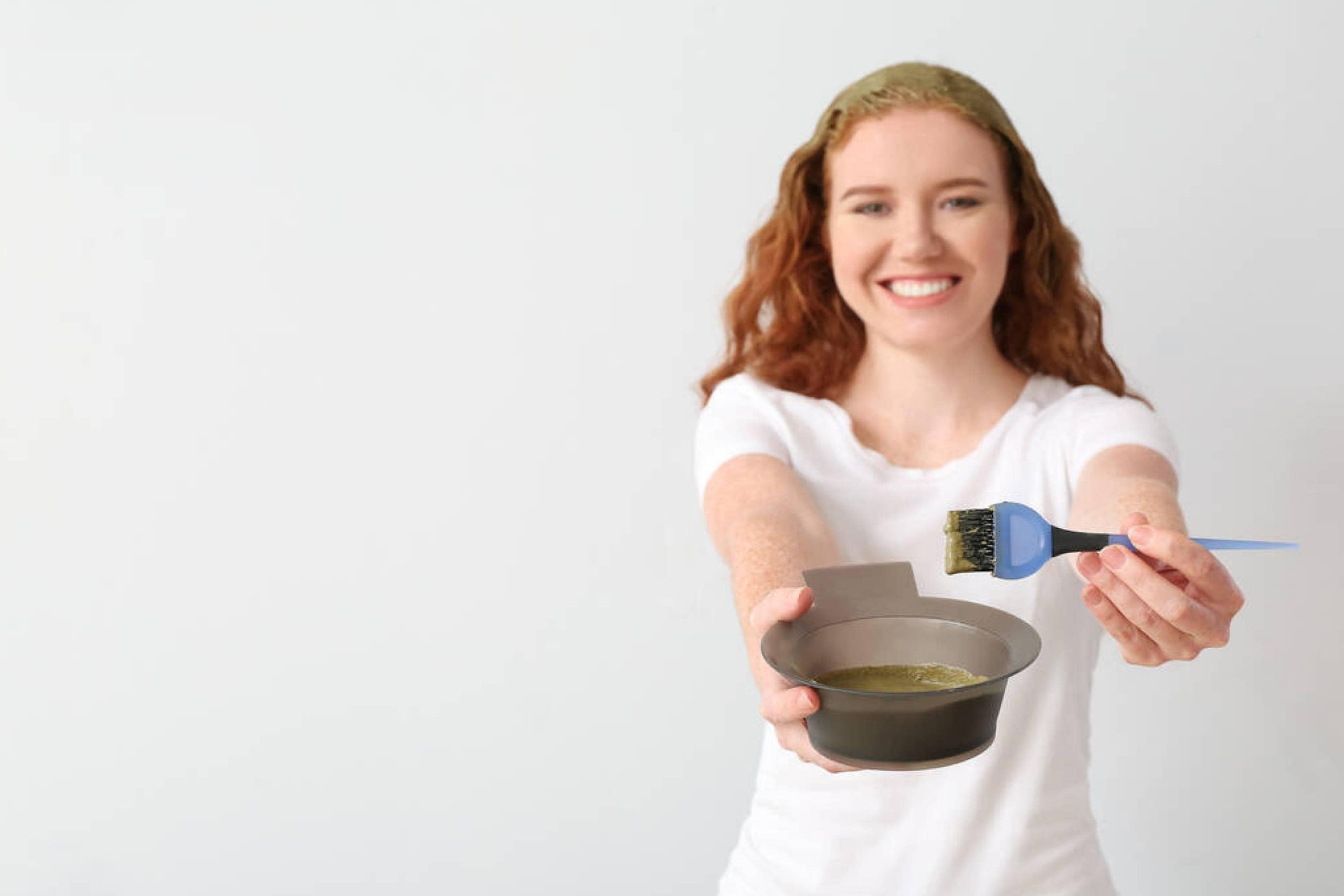
Dispose Of the Hair Bleach Or Dye Container
Once you have gotten rid of the dye or bleach, proceed to check the container to see if it is recyclable. If the container does not provide such information, you can ask your local recycling facility if they accept bleach and dye containers.
So, now you know exactly what steps should be taken in order to get rid of leftover hair bleach and/or dye should you have any after your latest coloring session.
As you know no, these products are considered quite harmful chemicals that can potentially cause serious damage to both your hair and your health. They are also unsafe for the environment!
This is why you should be very responsible when it comes to disposing of them. With the help of our guide, doing this will not be a problem for you though.
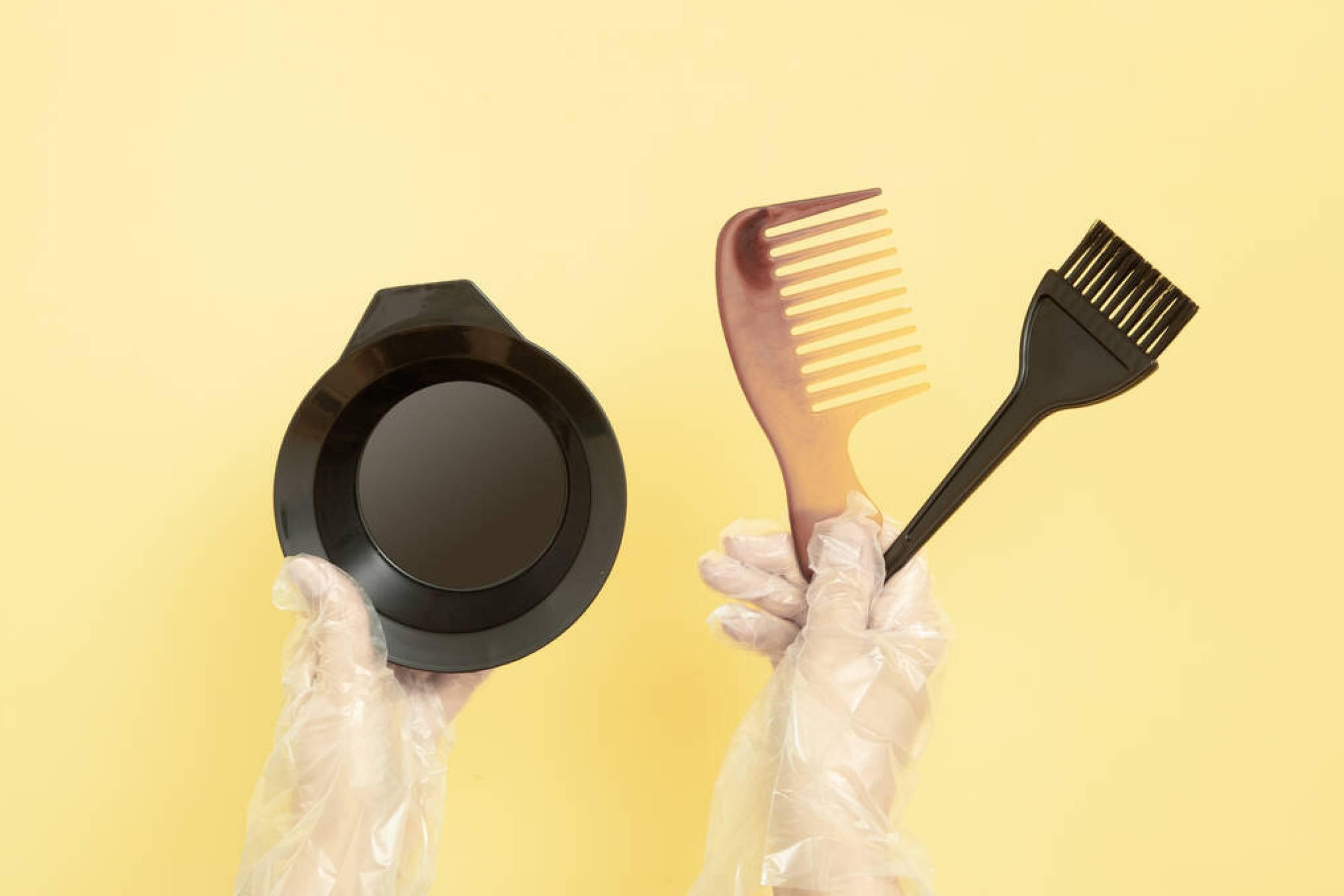
[wp-faq-schema title=”Frequently Asked Questions”]
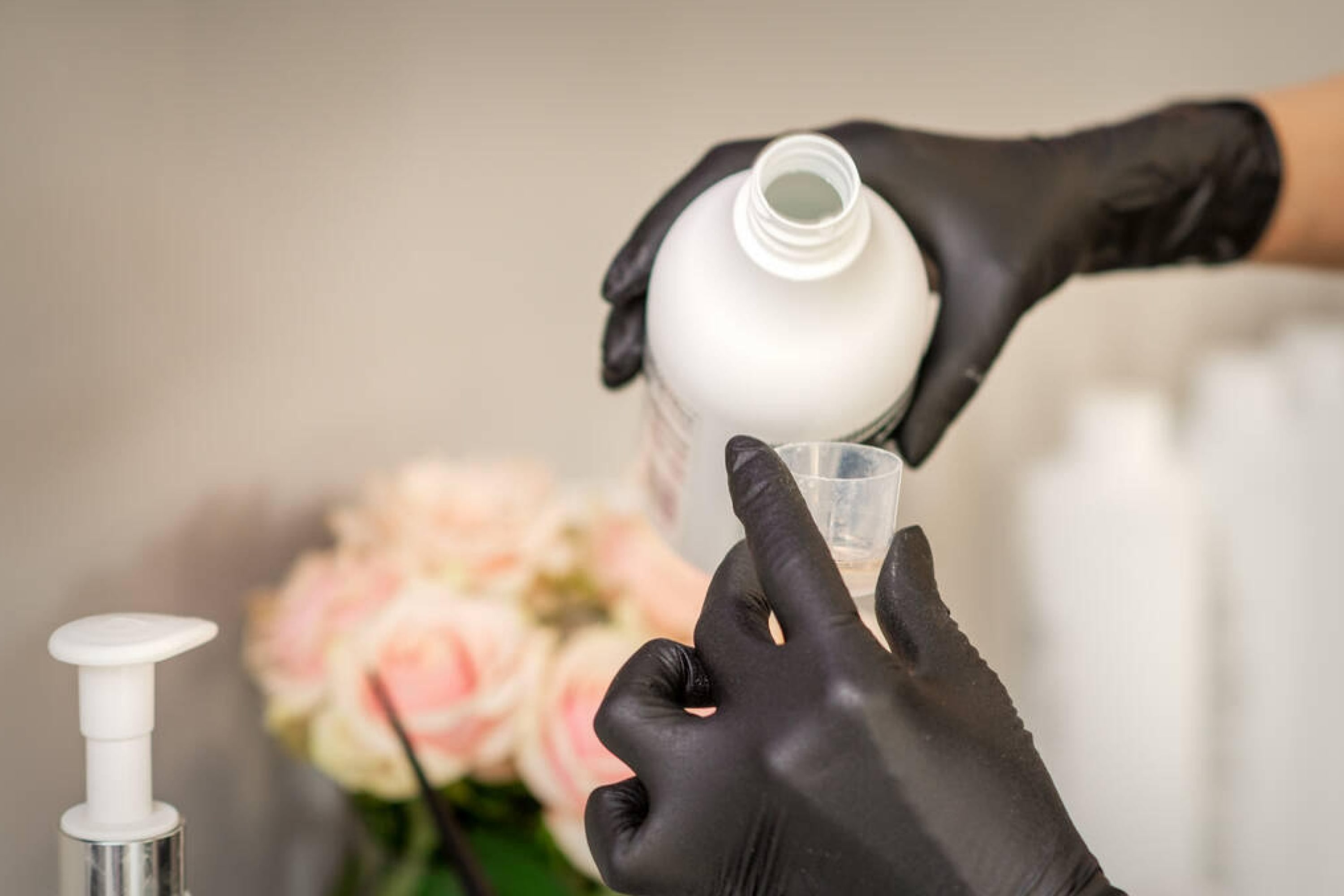
Does anyone know how to dispose of dye water? I can only find information on how to dispose of leftover hair dye, but not the water that was used for washing the brush. Can I just pour it down the drain?
Well, I simply flush it down the toilet and then floush it once or twice additionally to ensure that all the dyed water is gone. But I guess it’s not quite correct, to be honest. I’m just too lazy to search for the faciloities that accept chemical waste! Besides, I know for sure we don’t havve them in our area. So, since dye water is less harmful than the dye itself (in my opinion), this is how I dispose of it.
If I have a container with some expired hair bleach inside that I can’t get out of it, what shall I do to dispose of it? I guess the bleach dried inside, at least, this is the only reason I could find why it doesn’t come out!
Well, I guess you should just tgake it to the facility that accepts such chemicals and explain that there is bleach inside. See, they usually accept containers that have no chemicals inside, so you might have issues with disposing yours.
What are the correct steps to dispose of hair bleach at home without causing harm to the environment?
It’s crucial to handle hair bleach disposal responsibly, as it contains chemicals that can be harmful to the environment. To dispose of it, never pour the bleach down the sink, toilet, or shower drain. Instead, if it’s a small amount of leftover mixed bleach, you can dilute it with a lot of water and let it fully react until it’s spent. The resulting mixture can be disposed of in regular trash. If you have unused or large quantities of bleach, it’s best to take it to a local hazardous waste facility where it can be disposed of properly.
How do I safely dispose of unused or leftover hair dye?
Hair dye should be handled similarly to bleach when it comes to disposal. Never pour it down drains or toilets. For a small amount of mixed dye, you can allow it to dry out completely in the mixing container and then throw it away in the regular trash. Unmixed, unused hair dye should be taken to a local hazardous waste disposal facility.